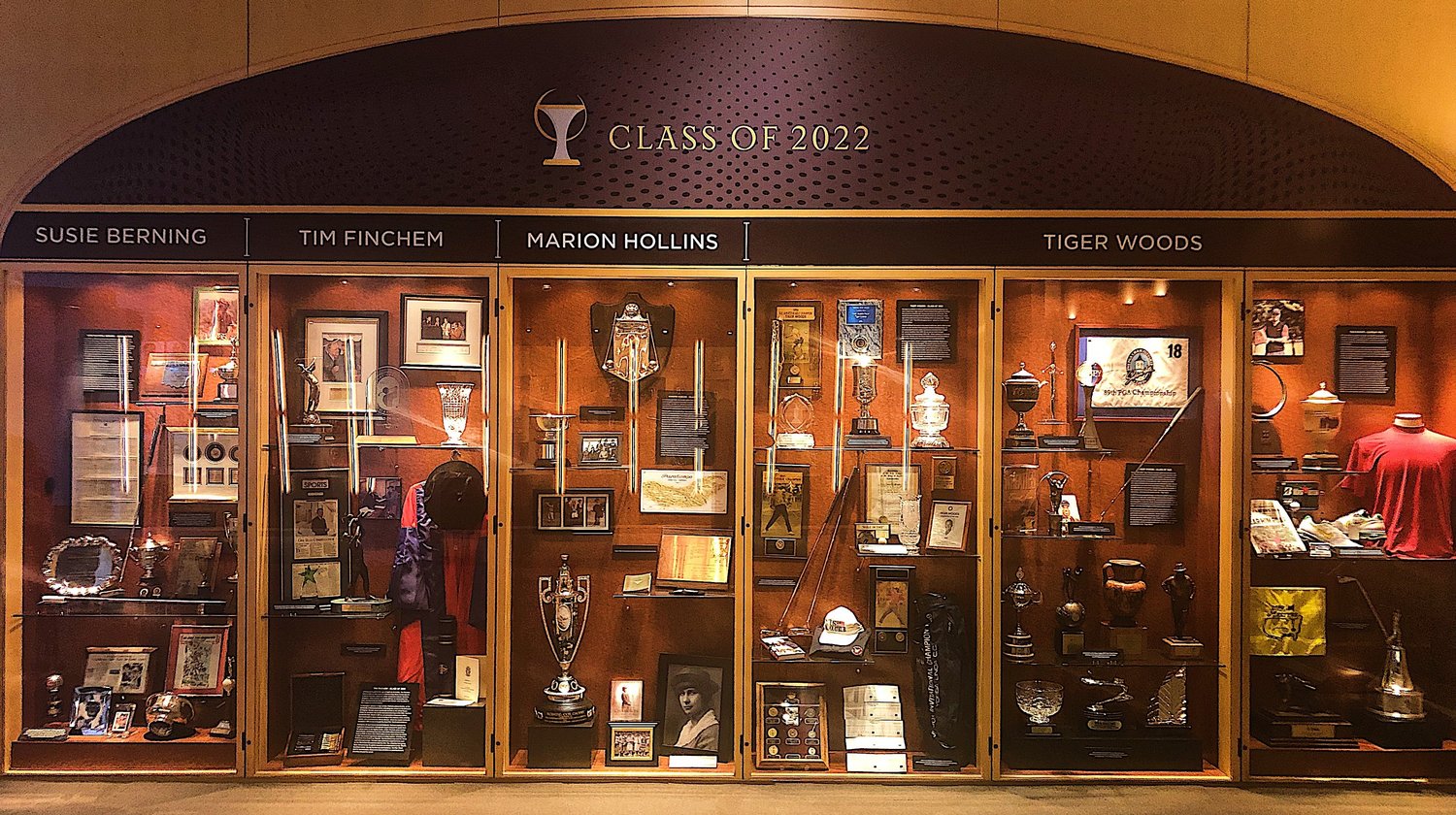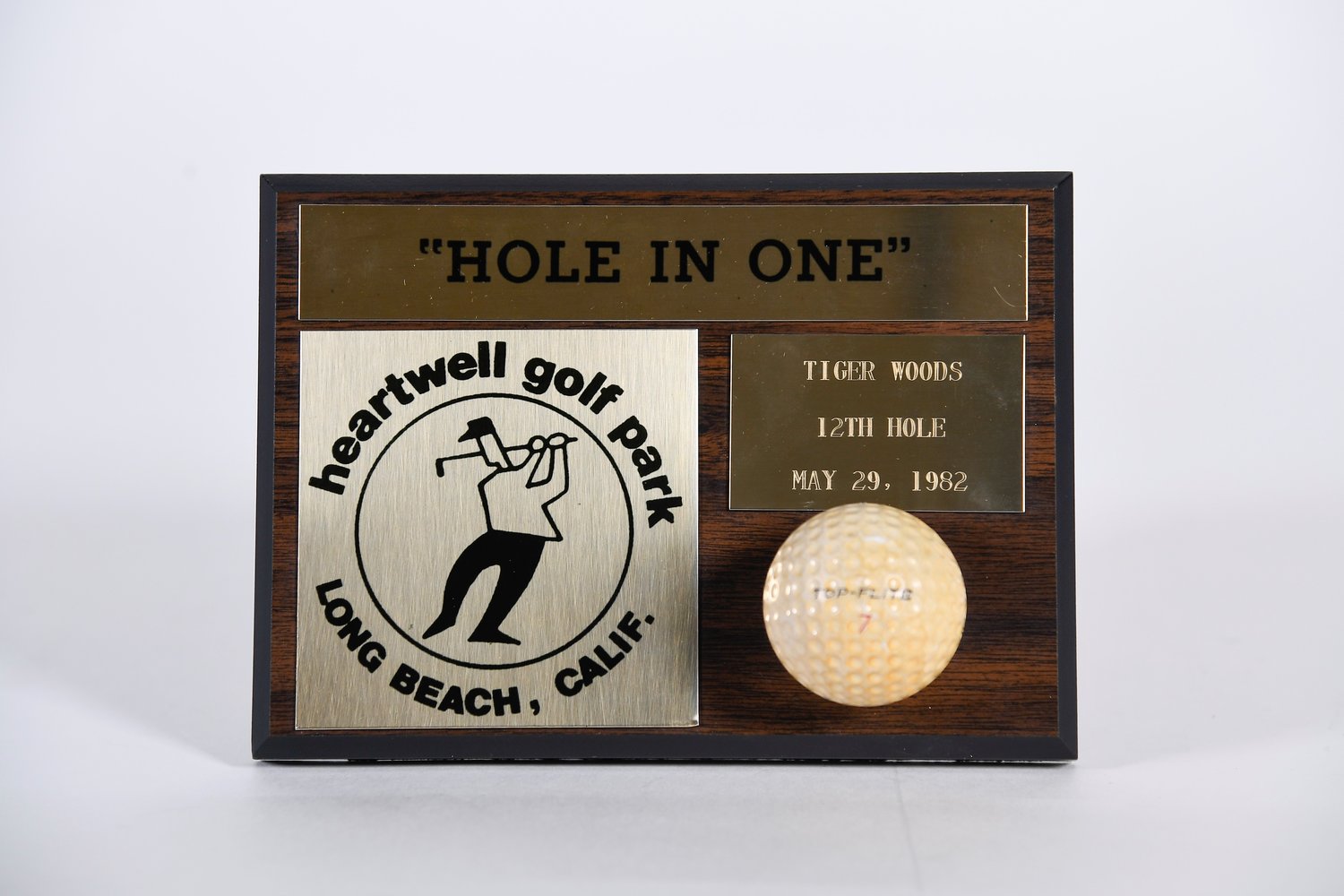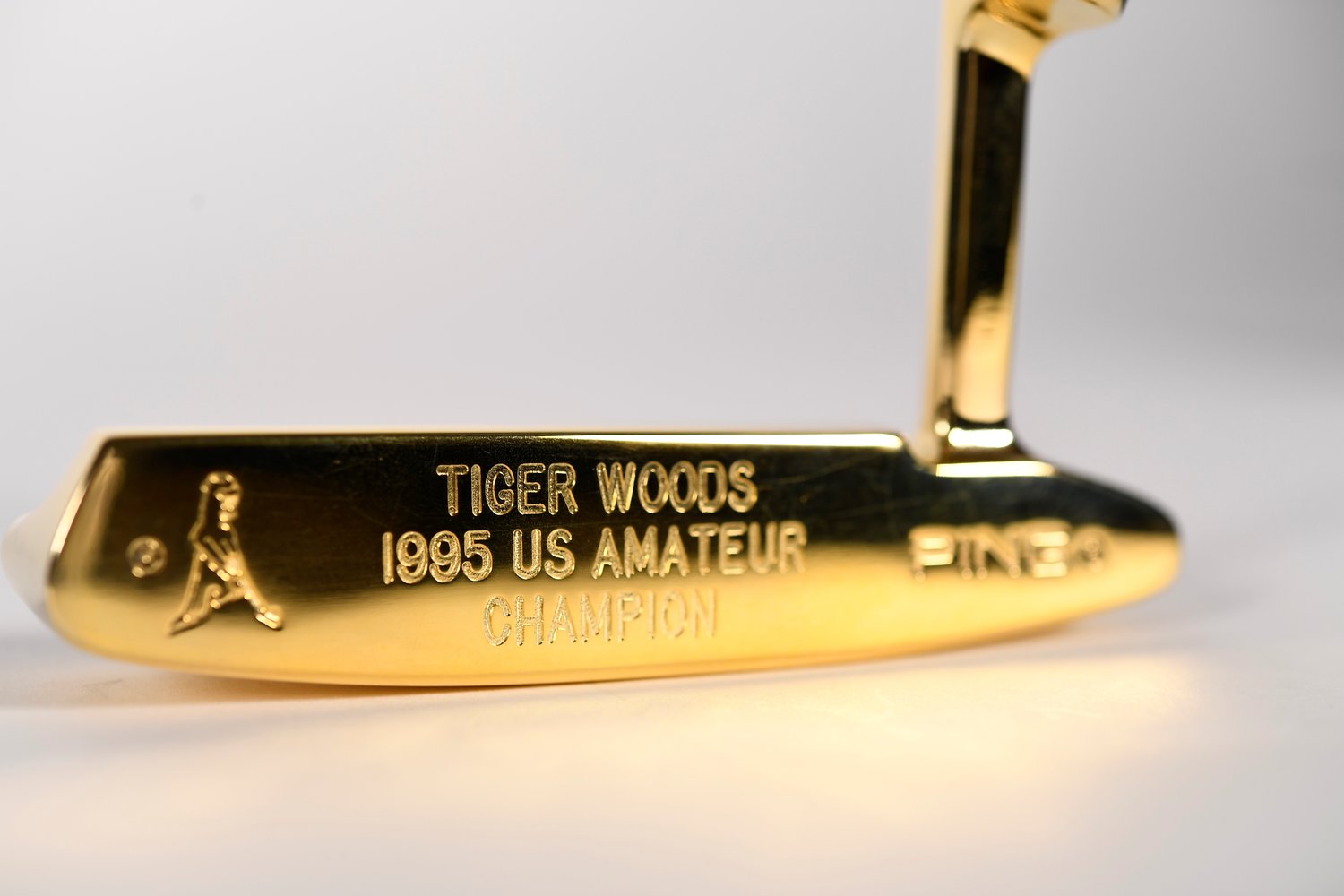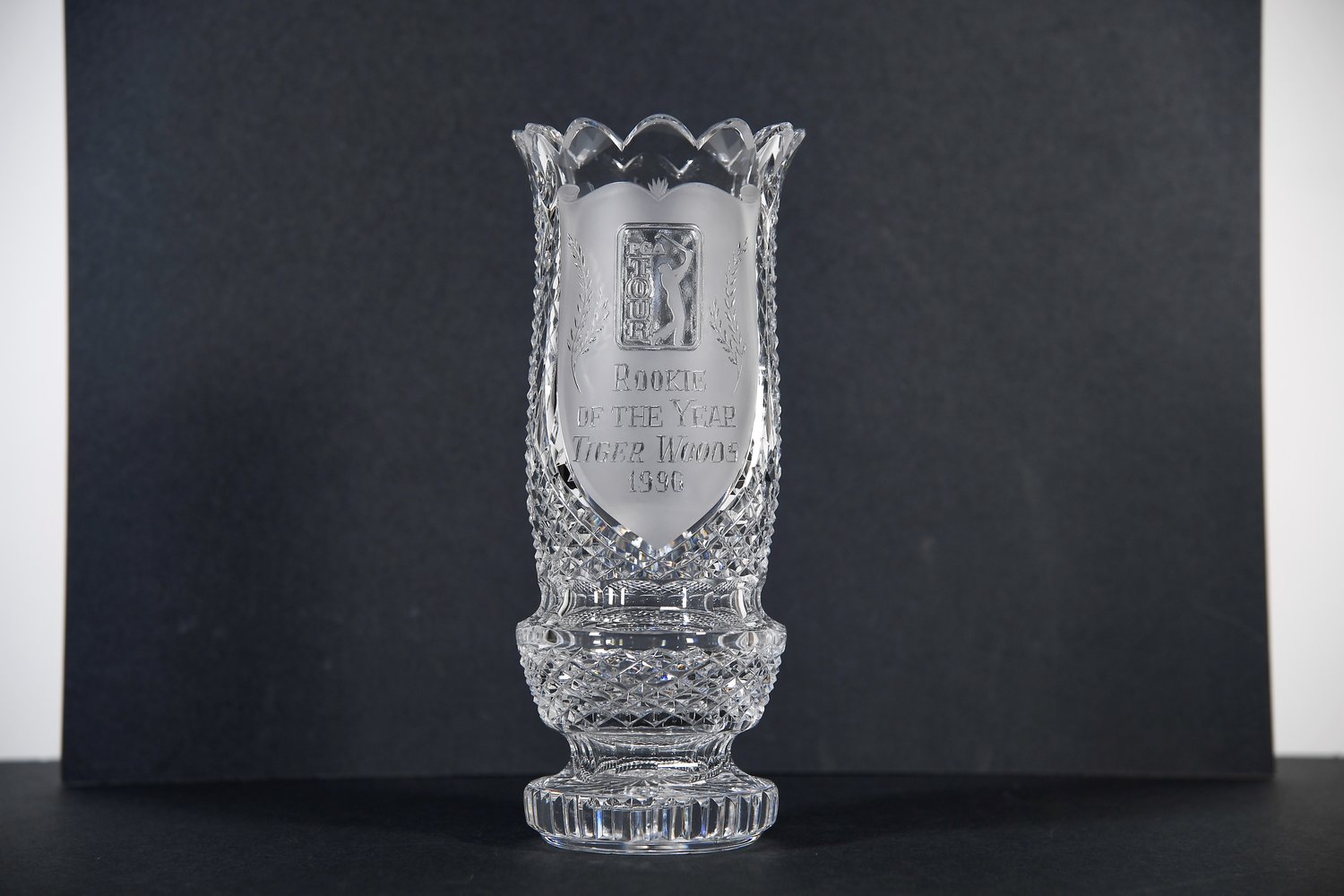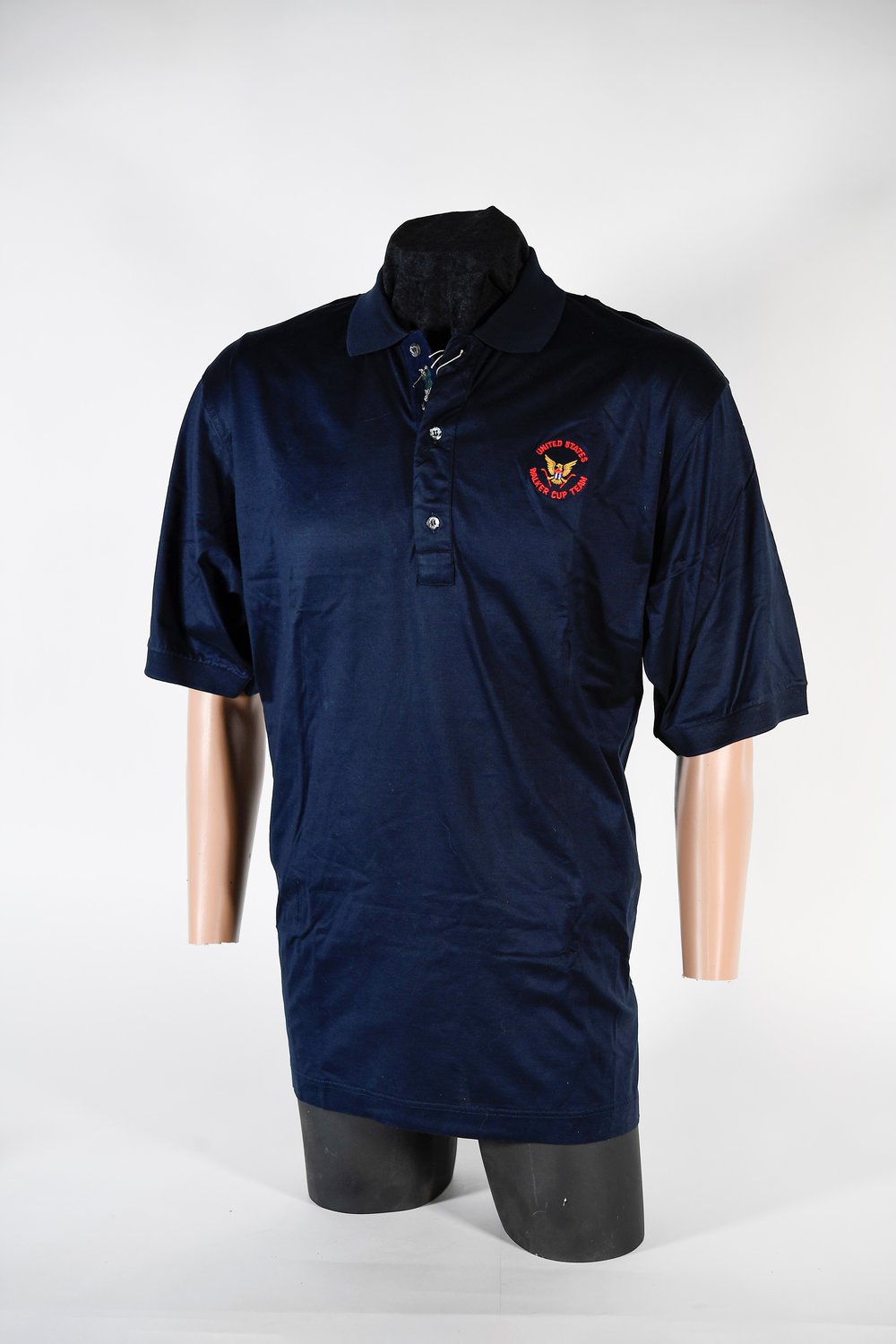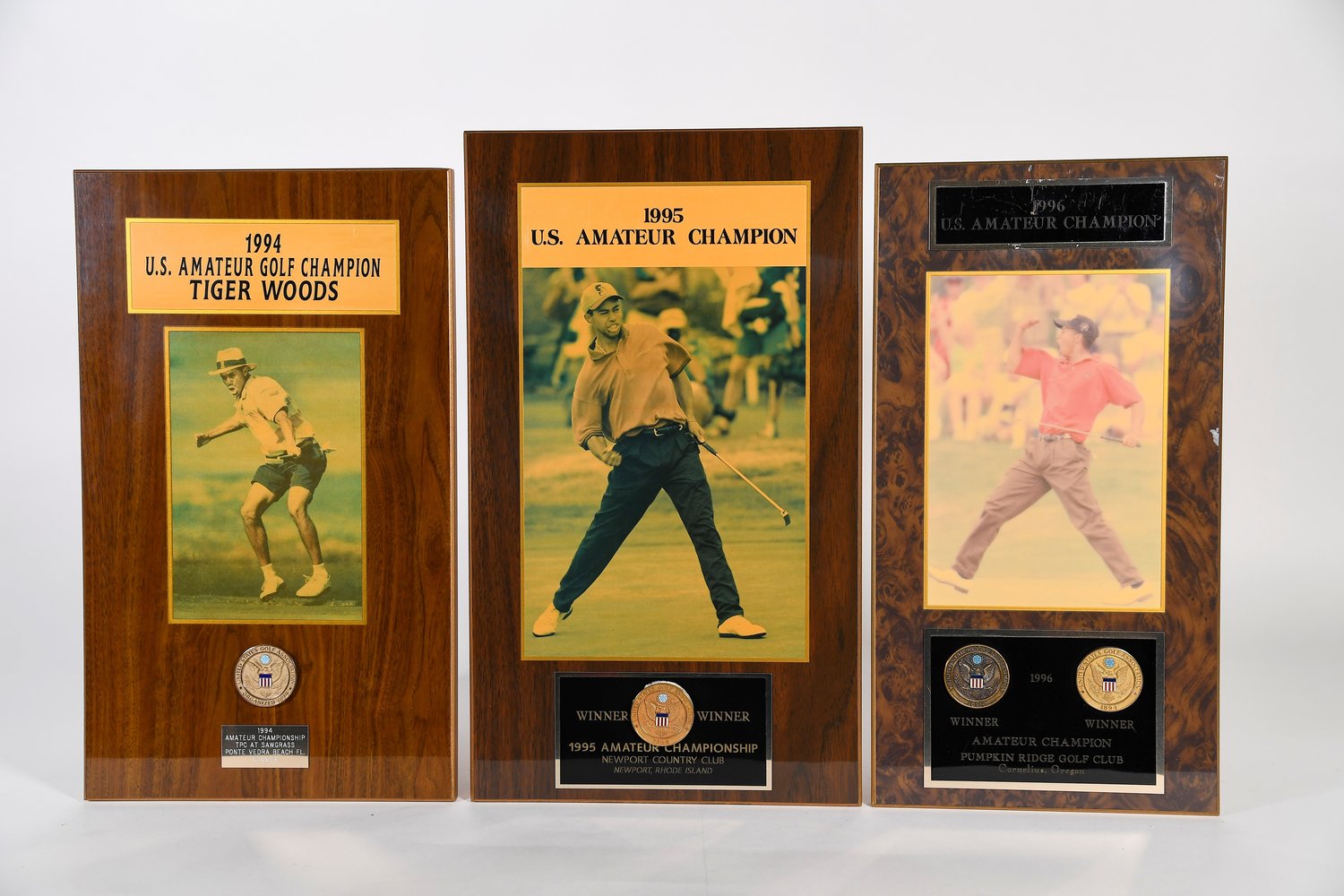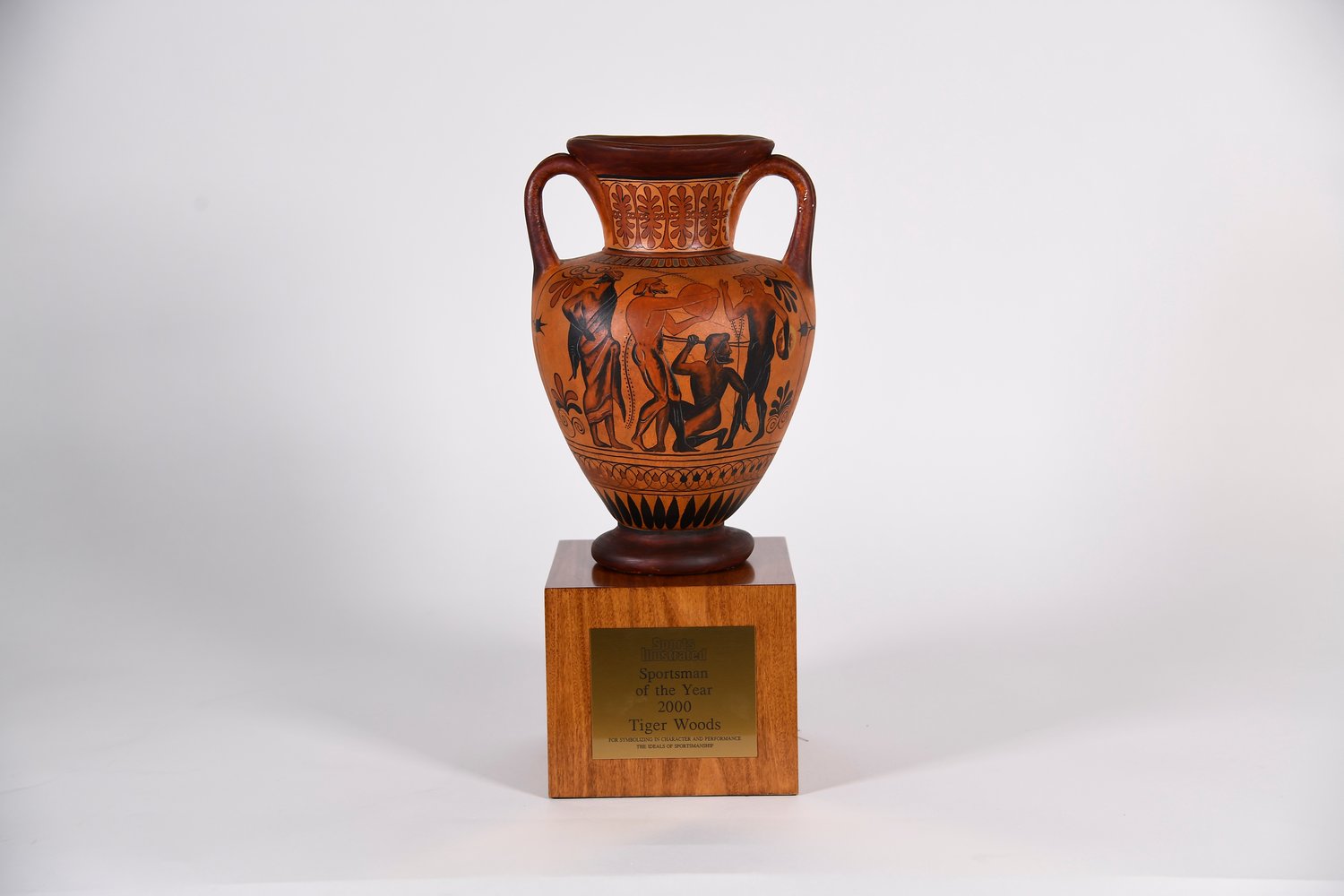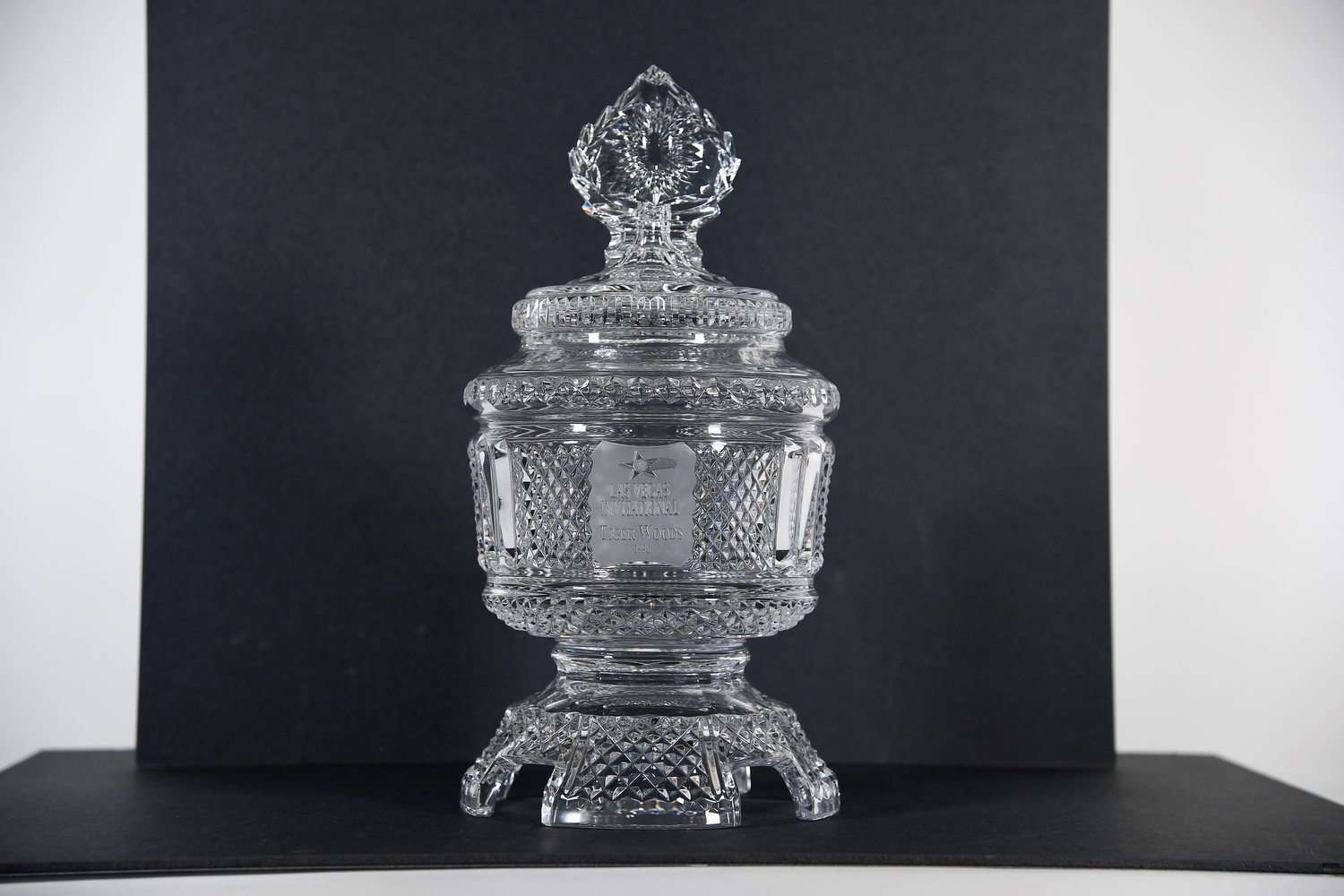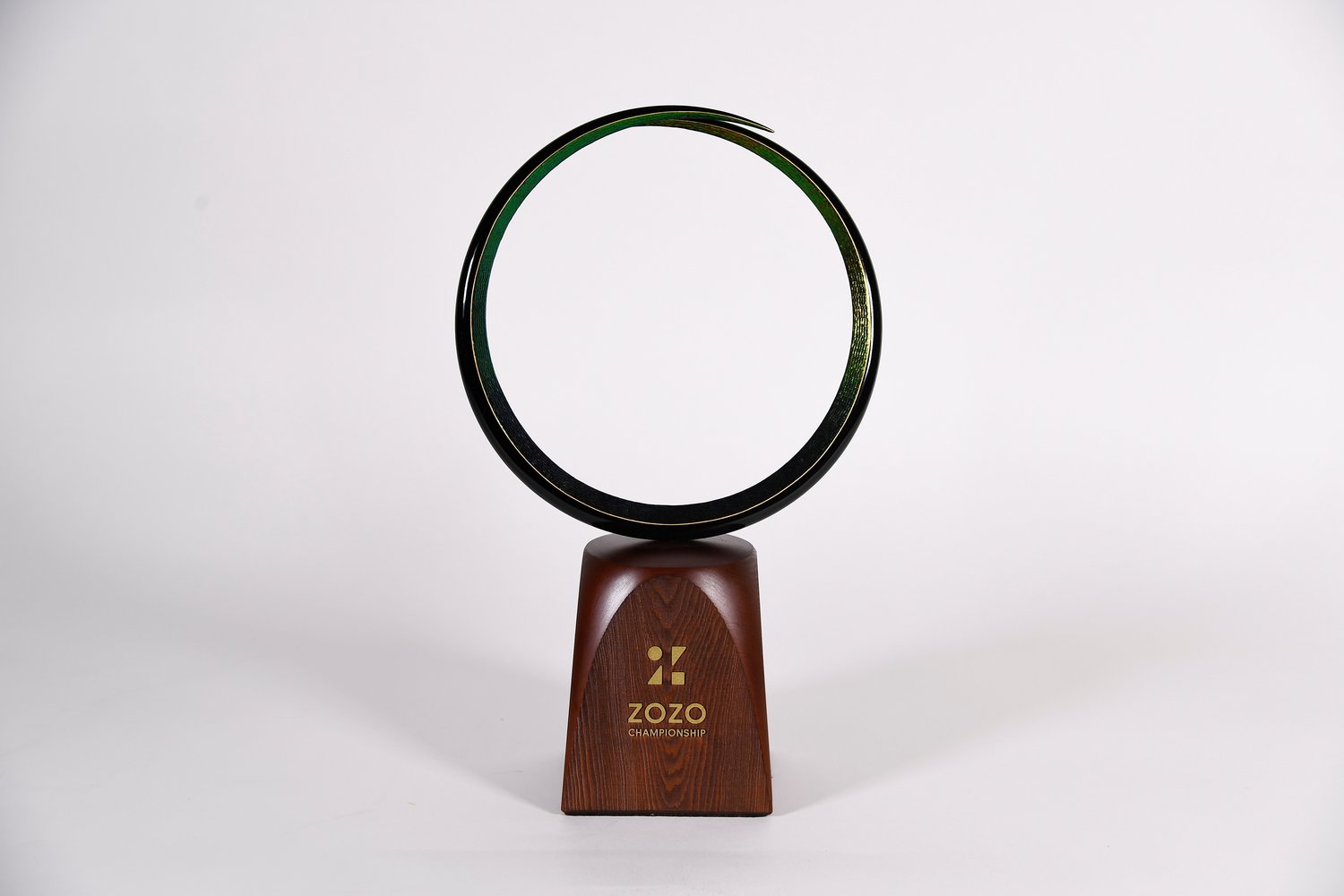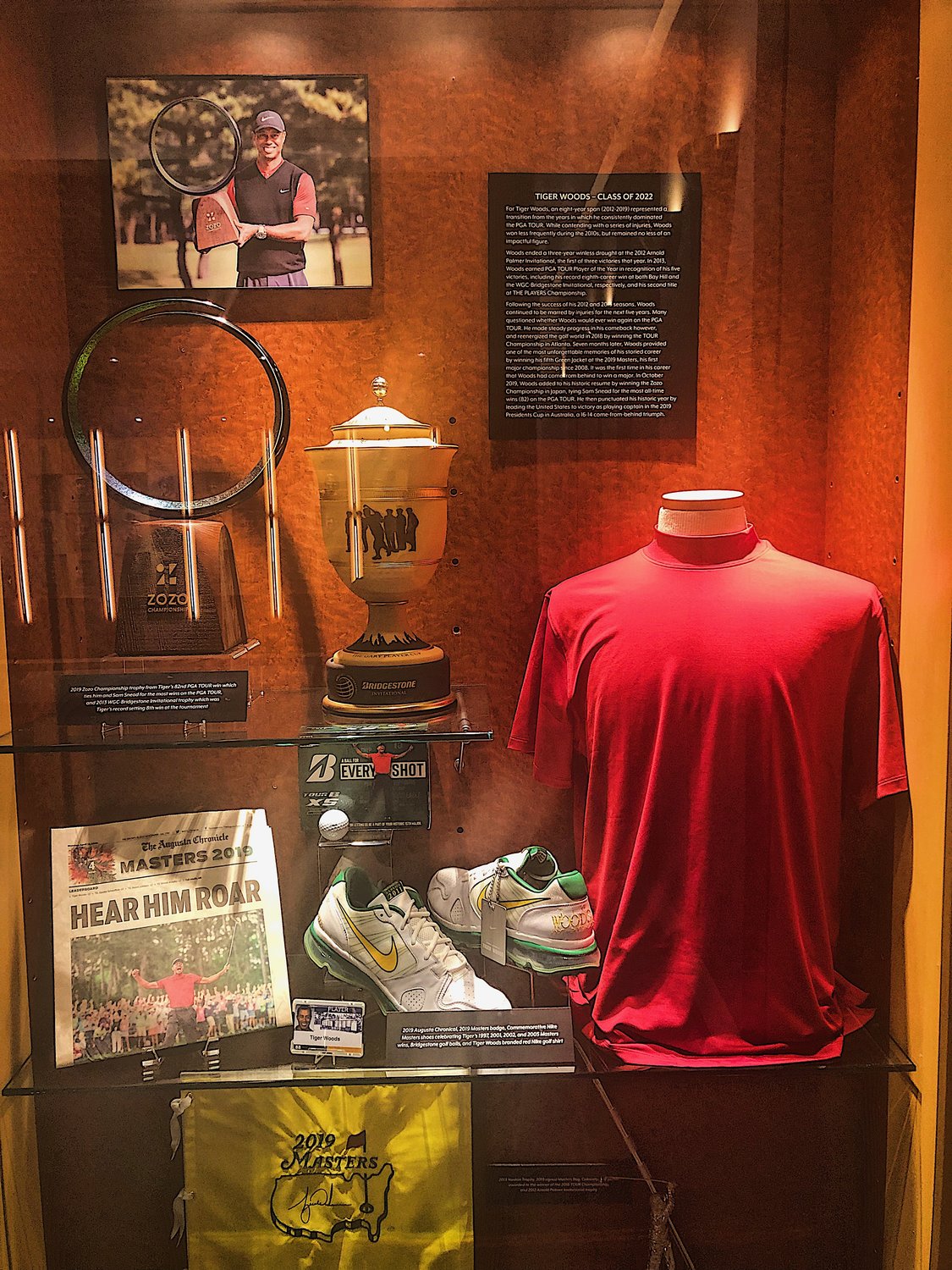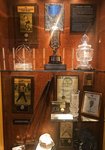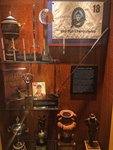Tiger Woods to enter World Golf Hall of Fame
There’s no doubt Tiger Woods belongs in the World Golf Hall of Fame. The only question is, out of his 82 PGA TOUR titles, 15 major championships and numerous victories in Europe, Asia and Australia, what items did he select to represent his career? What did he want in his World Golf Hall of Fame exhibit?
As everyone who has watched golf from the fall of 1996 to the present knows, Woods has won enough trophies to fill up a house, not just a trophy case. So, in his exhibit, we are certain to see trophies that have some meaning to him, whether he has explained it to us yet or not. Personally, after seeing what is there, I have questions, just because it’s different than expected — but that’s Tiger Woods. He is not what anyone — except for his father — expected.
According to PGA TOUR players who have been to his home, Woods only displays trophies from major championships. Naturally, a representative trophy from each of the majors is included, but they are in a different section of the Hall of Fame, according to insiders there. They are not in the three-panel, memorabilia exhibit. To recap, Woods won the Masters five times, the PGA four times and the U.S. Open and British Open three times each.
Now, there are some exhibit items that will surprise. Really, it’s worth the trip to St. Augustine to see what Woods thinks is important as an overall outline of his golf life.
For example, you would not immediately think of U.S. Junior Amateur victories when you think of Woods. But he has included his medals from the three consecutive junior titles that he won in 1991, 1992 and 1993. Then he moved on to the regular U.S. Amateur, where he also won three in a row in 1994, 1995 and 1996, one of which was played at TPC Sawgrass. Special plaques honor those victories. Gold-plated putters commemorating his first two U.S. Amateur wins are showcased.
In addition, Woods chose to feature the Walker Cup with a shirt from the 1995 matches. So, as it turns out, amateur golf meant a lot more to Woods than we knew. In reality, without his outstanding amateur career, there would have been no Stanford University scholarship, no excellent college golf career. His amateur achievements were a necessary launching pad for what was next.
Woods, like Phil Mickelson, Justin Leonard, Gary Hallberg, Scott Verplank, Ryan Moore and Bud Cauley got his TOUR card without going through Qualifying-School or Q-School, which no longer exists. But when Woods turned pro, Q-School was the primary path to the PGA TOUR.
The only other option was to earn as much money as the 125th player on the money list, which would provide some kind of playing status or what is now the Korn Ferry Tour. It was almost unthinkable for a new professional to win an event right away, but doing so would give anyone a two-year exemption to play the PGA TOUR.
Woods could have seven tournament invitations, called exemptions, for tournaments in 1996. If he couldn’t make enough money in those seven tries, he would need to go through Q-School. If he didn’t make it through that, he would have to try the next season to get exemptions to make the required amount of money and obtain temporary status. Or he might have done what Jordan Spieth did and played on the Korn Ferry Tour.
But what really happened was that after the 1996 U.S. Amateur, Woods received a sponsor exemption to the Greater Milwaukee Open. He turned pro that week, uttering the now famous phrase, “Hello, world!” at his press conference. A mere four weeks later, Woods locked up his first PGA TOUR victory at the Las Vegas Invitational, and that trophy is prominently displayed. Not too far from it is the 1996 PGA TOUR Rookie of The Year crystal.
If his first victory was a surprise, and it was, then when he won again two weeks later at the last tournament of the year, the Walt Disney Classic, everyone should have been on notice. He was now two for seven in tournaments. He was not a one-win-wonder. He was no fluke.
From 1996 forward, as golf fans know, Woods garnered a landslide of tournament titles and trophies, beginning with the tournament of champions in January of 1997. It was then called the Mercedes Championships, and it was his third victory in less than six months.
Then the campaign for W’s, as Woods calls them, began in earnest.
Four months later he blew up golf with a mind-blowing, record-setting, 12-stroke victory at the Masters. That gave him a five-year exemption to the PGA TOUR, and by the way, his first major. Life was good for Tiger Woods.
Woods had so many achievements, that his display doesn’t focus on the 1997 Masters, and that’s a surprise.
In the Woods section of inductee exhibits, there are many interesting bits and bobs filling the three large, framed, memorabilia cases. There’s a book his father wrote called “Training a Tiger.” There is a framed commendation of praise from the city of Cypress, California, for his “outstanding golfing achievements” and for bringing “distinction to the City of Cypress.” It was issued when he was just 8 years old. But six months earlier, when he was still 7, he had made his first hole-in-one at Hartwell Golf Park in Long Beach, California. That was May 29, 1982. He used a Top Flite. There’s a plaque for that, and it has the ball that found the hole.
From 1997, when Woods won the Masters, to 1999, he had just four victories. Then in August of 1999, he won the PGA for a second major. That same year he had eight victories in all.
The following season would be extraordinary. So special that nothing remotely like it has been done except by Ben Hogan in 1953.
After failing to win the Masters in the spring of 2000, Woods won the next three majors that year. Three professional majors in a year is a feat that had only been accomplished by Ben Hogan in 1953 when he won the Masters, the U.S. Open and the British Open. Woods, however, won the U.S. Open at Pebble Beach (by an unheard of 15 strokes), the British Open at St. Andrews and the PGA Championship in a playoff over Bob May.
After 2000, there was a Tiger Woods Wheaties box. A Triple Crown trophy celebrated the three majors. Sports Illustrated awarded him Sportsman of the Year. He also received the Laureus World Sportsman of the Year Award.
The following April, there was a special TV Guide cover promoting Woods’ opportunity to win a fourth major in a row. Miraculously, he did it. The three majors in 2000 and the Masters in 2001 became known as the “Tiger Slam” because, as Woods pointed out, he had all four major championship trophies on the mantel at once. No other professional golfer has ever done that.
Yes, purists say, what about Bobby Jones and his historic achievement of the Grand Slam in 1930? Two of them were amateur events, and two were professional. As any professional golfer will tell you, there’s a big difference between beating amateurs twice and beating professionals twice and beating professionals four times. Yes, Jones’ accomplishment was extraordinary because he was mostly a part-time player.
Incredibly, winning four majors in 12 months is not all Woods did in that time span. Between June of 2000 and June of 2001, Woods won 13 tournaments, including THE PLAYERS and the four majors. He beat Ernie Els, Phil Mickelson, Vijay Singh, David Duval, Davis Love III, Jim Furyk, David Toms and whomever showed up to challenge him.
But the icing on the Woods’ celebratory career cake has to be the 2019 Masters, which is represented with a red mock-neck shirt, tournament badge, special shoes, Augusta Chronicle newspaper, golf ball and autographed pin flag.
However, not to be forgotten by any means — and he hasn’t — is the trophy from the 2019 ZOZO Championship, which marked Woods’ 82nd victory, tying Sam Snead with the most PGA TOUR victories.
Will Woods play again on the PGA TOUR? Will he win again? We just don’t know. He’s still recovering from injuries suffered in a car crash in 2021. If he is ever able to tee it up in a regular PGA TOUR event, it will be one of the biggest victories of his life. If he is able to win an 83rd title, that would be truly astonishing.



